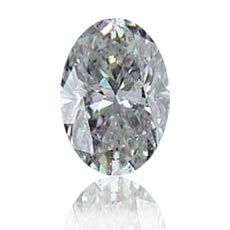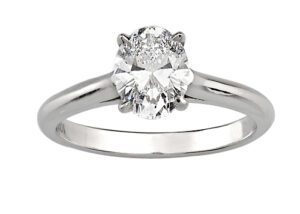Oval cut diamonds have beautiful brilliance similar to a round diamond. Oval diamonds are also very popular as their length can accentuate the long, slender fingers of a woman.
The Oval cut diamonds are a relatively young shape, and were reated by Lazare Kaplan in the late 1950’s – early 1960’s. The oval brilliant cut is an elliptical variation of the more common round brilliant cut.
The modern Oval cut is a fiery diamond that reflects light brilliantly. It’s a wonderful selection for someone who loves the sparkle of the round brilliant, but desires a unique shape.

When purchasing an oval cut diamond, it’s important to select both the highest grade cut and colour that’s within your budget. Our minimum recommendations for buying oval cut diamonds are as follows (please remember these are opinion only and your taste may vary):
Polish: Very good
Colour: G
Clarity: SI2
Depth percentage: 58-70%
Table percentage: 51-70%
Visit our diamond search to find the best oval diamond.
Because an oval cut diamond can be “short and fat” or “long and thin” always be sure to check the length and the width of the oval shape diamond so it suits your taste prior to purchasing. For most traditional length-width ratio of oval diamonds, look for rations between 1.33 and 1.66. However some of our customers also prefer longer, thinner cuts and others prefer rounder, softer cut oval diamonds. The choice is yours.
Like the “pear shaped diamond”, the oval cut can fall victim to the “bow tie effect”, which is an undesirable characteristic which features a dark area near the centre of the diamond. It’s not unusual to see “some bow tie” if you examine an oval-shaped diamond from various angles and in different lights, but what you don’t want is an obvious black/dark spot that is dull from every angle and in all lights. Bow ties are quite obvious to see with the naked eye.
Learn more about the official GIA description of cut.
Oval Diamond Rings

While not the traditional selection, ovals make lovely engagement rings, either on their own or with accent stones. They do require six-pronged settings most of the time, so it’s worthwhile to keep that in mind when making a decision on buying an oval shaped diamond.
Quick Quote:

